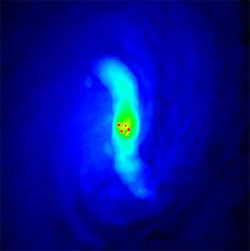
In this false-color image combining several sets of observations, the visible light is in blues (from the Hubble Space telescope) showing swirls of stars; the observations from the Very Large Array radio telescope are in green and aqua displaying a central emission with two jets, and the newly discovered clusters are in red in the middle. The black hole is represented by a dot to show the location – the black hole itself can’t be seen. Credit: Swinburne University of Technology
Researchers from Swinburne University of Technology have discovered huge young star clusters around a black hole in the center of galaxy NGC 2110.
Huge young star clusters resembling a string of pearls around a black hole in the center of a galaxy 120 million light-years away have been discovered by researchers at Swinburne University of Technology.
The galaxy, called NGC 2110, is in the constellation of Orion.
Using the giant Keck telescopes in Hawaii, the researchers, Professor Jeremy Mould and PhD student Mark Durré from Swinburne’s Center for Astrophysics and Supercomputing, found four-star clusters, very close (in astronomical terms) to a black hole.
“These star clusters hadn’t been seen before because they are hidden by dust clouds around the black hole and because they appear very tiny, but they can be observed in infrared radiation that penetrates the clouds,” Mr Durré said.
“The Keck telescope also uses ‘adaptive optics’, which removes the atmospheric shimmer that blurs images.”
Supermassive black holes – condensations of matter so dense that not even light can escape from its gravity – are thought to be at the center of all large galaxies.
“Our own galaxy, the Milky Way, has a black hole that is almost four million times the mass of our Sun,” Mr Durré said. “NGC 2110 has a black hole about 100 times bigger.”
The black hole produces huge amounts of energy that comes from gas and dust falling into it. As the material streams in, it hits an accretion disk – a spinning ring of superheated gas around the black hole’s equator. Enormous quantities of radiation shine out and some of the matter also gets spewed out in jets, which are most clearly observed by radio telescopes.
Tides from the black hole and other features of the galaxy can help form star clusters – collections of thousands of stars which are all formed together from a gas and dust cloud. In turn, gas out-streaming from the young stars in the clusters can feed and energize the black hole.
“The jets can compress gas around them to start this star cluster formation, but they can also stop the process by blowing the gas completely out of the galaxy. The fine details of how the matter is funneled in and how the black hole affects the galaxy around it remain fascinating questions for astronomers as they try to work out how galaxies form.”
Mr Durré said that according to computer simulations, star clusters should form like beads or pearls on a string in a ring around the black hole – and this is just what the researchers have observed.
“After many millions of years, these clusters will be torn apart, again by tidal forces, and gradually settle into a central collection closer around the black hole.” Mr Durré said.
Reference: “Young Star Clusters In The Circumnuclear Region Of NGC 2110” by Mark Durré and Jeremy Mould, 6 March 2014, The Astrophysical Journal.
DOI: 10.1088/0004-637X/784/1/79
arXiv:1402.3339



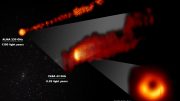
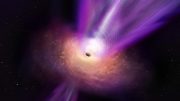

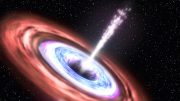

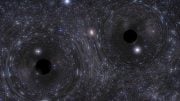
Be the first to comment on "Researchers Discover Young Star Clusters around a Black Hole in Galaxy NGC 2110"